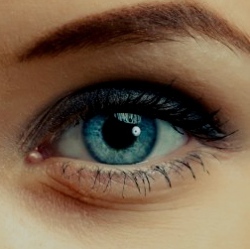
The Eye Control feature in Windows 10 is currently beta and leverages what Tobii calls “eye gaze” technology, which uses a camera to track where you are looking on a screen. The beta integration will also let you activate icons and move a cursor or targeting reticle with your eyes. It will be a new way to provide input in an upcoming version of Windows 10.
The Tobii Eye Tracker 4C device is the first to support Windows 10. This integration also opens the door to native implementations of more humanized user interactions and use cases for eye tracking in broad areas such as gaming and productivity.
“Adding native eye tracking support to Windows 10 is a key milestone in our mission to make this technology part of our everyday devices,” said Henrik Eskilsson, CEO of Tobii, in a statement.
“Through integration with Microsoft’s operating system, it becomes possible over time to realize robust eye tracking implementations that add a range of user benefits. This collaboration clearly shows the value of eye gaze input and is a big step forward on the long-term journey to drive high-volume adoption of eye tracking.”
The technology could make computers more accessible to disabled people who can’t use other forms of input, like famous astronomer Stephen Hawking.
“Bringing Eye Control to Windows 10 will empower people using just their eyes to utilize Windows features,” said Jenny Lay-Flurrie, chief accessibility officer at Microsoft, in a statement.
“We are incredibly grateful for the partnership with the ALS [amyotrophic lateral sclerosis] and MND [motor neuron disease] communities and Tobii for their active engagement and feedback throughout the development cycle. We look forward to our ongoing collaboration to further develop these features in future releases as we continue on our mission to empower people to achieve more.”
Eye tracking has already been tested across many fields of use, from full-scale, hands-free accessibility to immersive gaming. I’ve used it to control a targeting reticle in games and to throw knives as zombies more quickly in the game Dying Light. And I’ve also used it to control a Windows screen.
Initially, eye gaze will be used in a set of accessibility features to enable typing and moving the mouse cursor with your eyes. This integration of eye tracking into Windows aligns with Tobii’s long-term vision of taking eye tracking mainstream and puts Microsoft on the cutting edge of human computer interaction.
“With eye tracking, devices can better understand our intentions, a key ability in creating truly natural human-computer interaction,” says Oscar Werner, the president of Tobii Tech, in statement. “Eye tracking support in Windows 10 has the potential to form a new paradigm that fundamentally transforms how we interact with our devices.”
